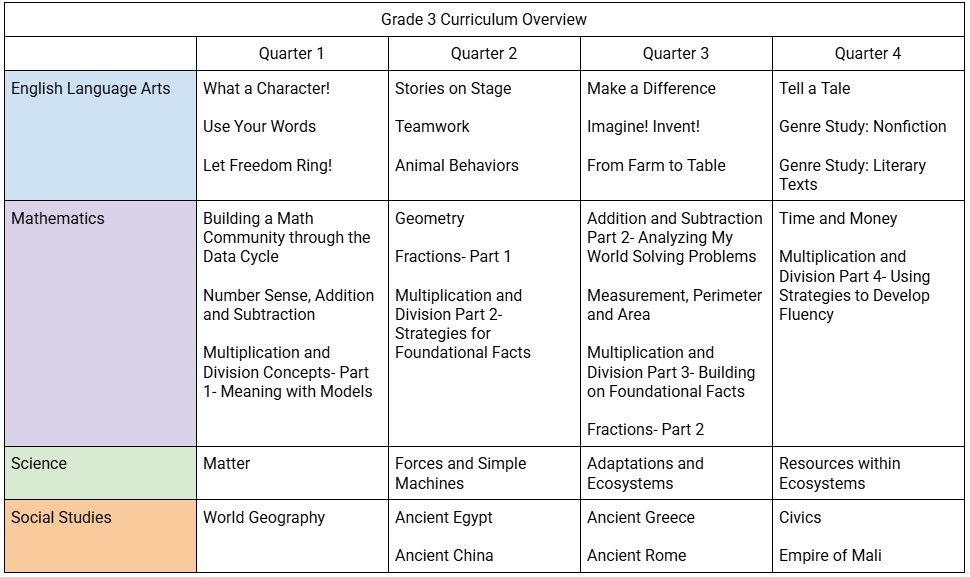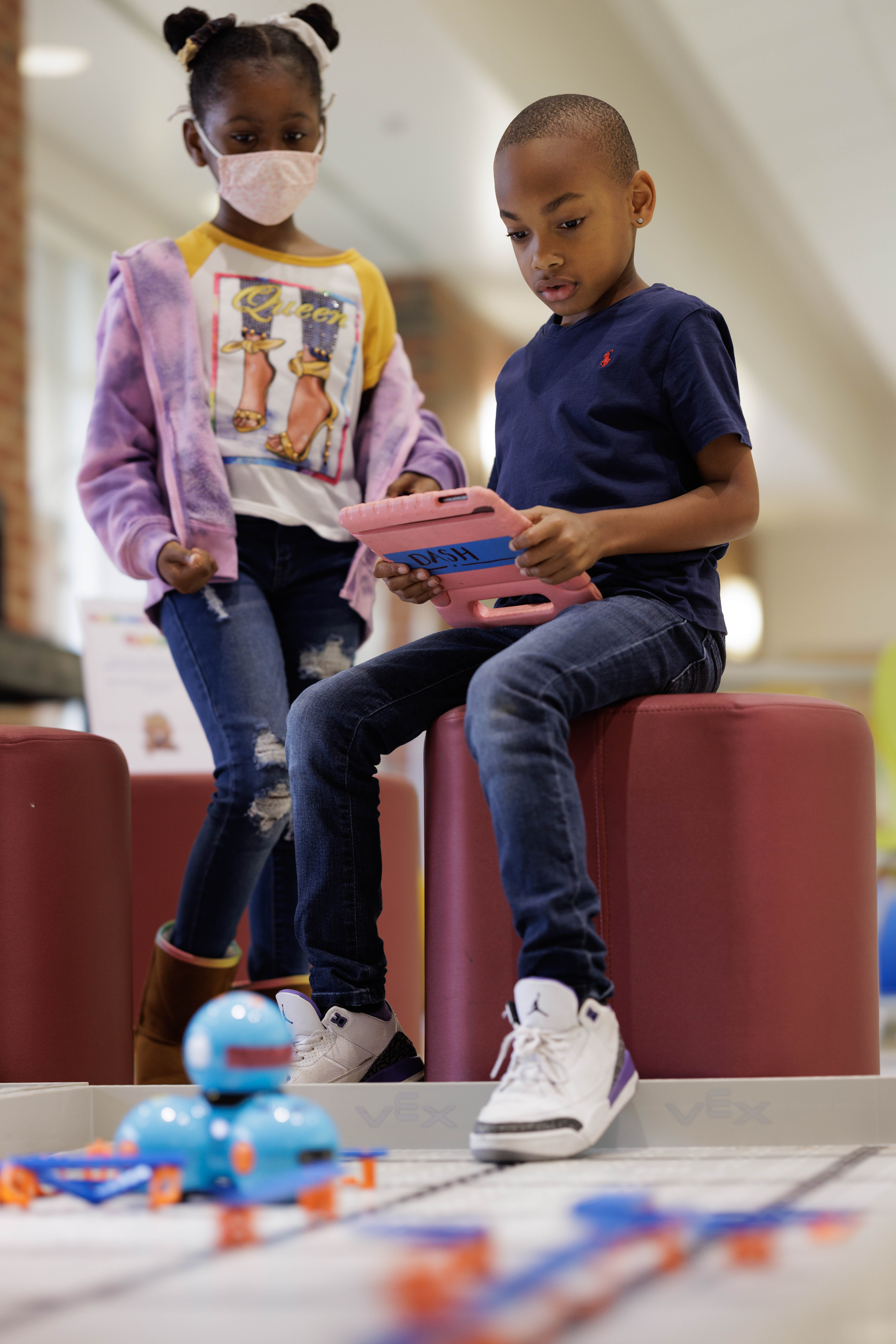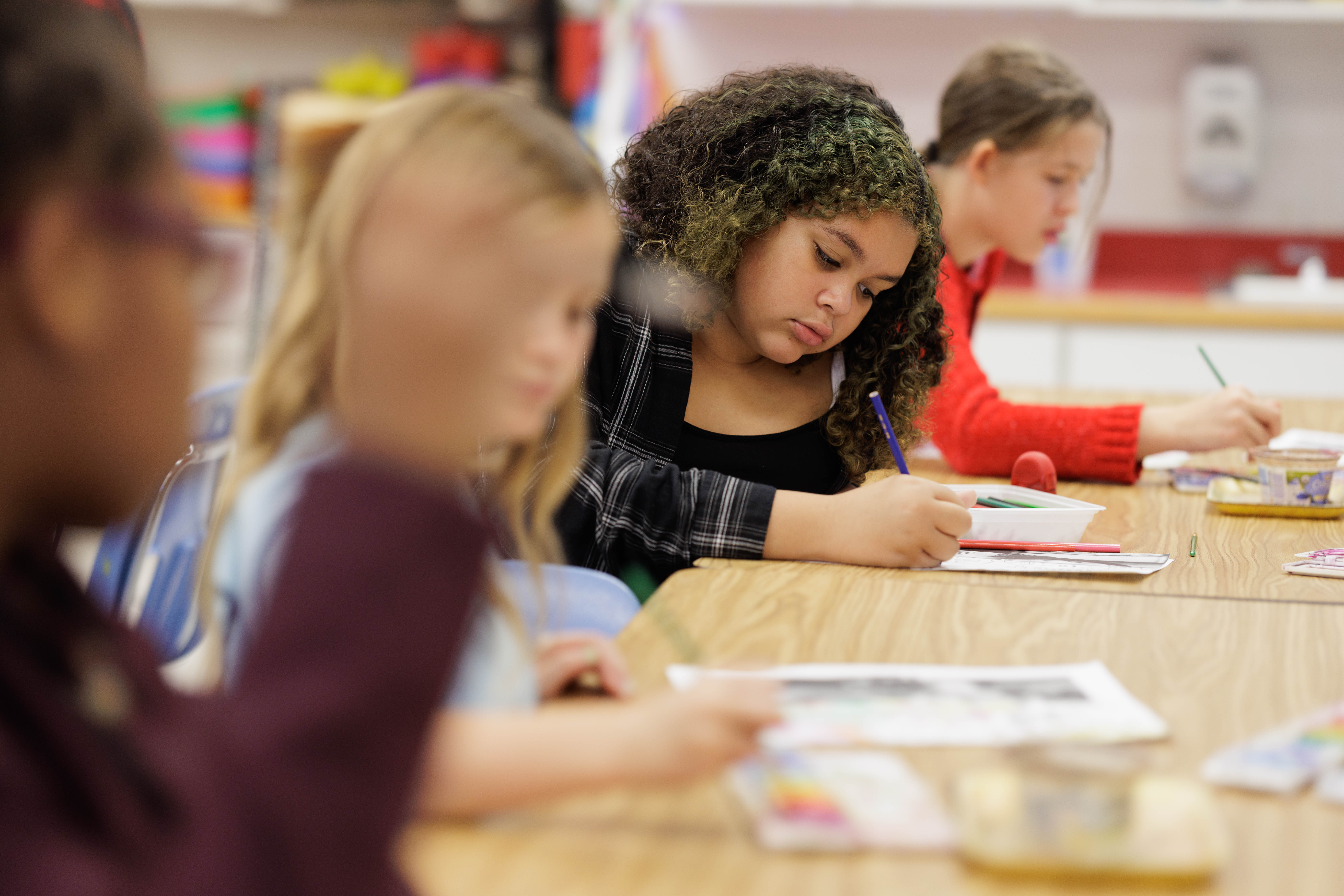
English Language Arts
The third-grade English language arts program focuses on the areas of foundations of reading, vocabulary, reading literary texts, reading informational texts, writing, language usage, communication, and multimodal literacies. Students will be introduced to a wide variety of literary and informational literature which will serve as a basis for instruction and practice in phonics, vocabulary, comprehension, fluency and writing.
Foundations of Reading
- Applies phonetic principles to read and spell words.
Vocabulary
- Builds vocabulary and word analysis skills.
Reading Literary texts
- Uses textual evidence to demonstrate comprehension of a variety of grade-level literary texts.
Reading Informational texts
- Uses textual evidence to demonstrate comprehension of a variety of grade-level informational texts.
Writing and Language Usage
- Prints legibly in manuscript and cursive and accurately spells grade-level words.
- Writes in a variety of forms.
- Uses conventions of Standard English when speaking and writing.
Communication and Multimodal Literacies
- Develops effective oral communication and collaboration skills.
- Conducts research to answer questions or solve problems.
Click here for a detailed storyboard for Grade 3 English Language Arts
Click here for more information about the Virginia Standards of Learning for Grade 3 Language Arts

Mathematics
The third-grade mathematics program builds upon the understanding of the ten-to-one relationship that exists in our Base-10 number system. In addition, students explore fractional relationships and composing and decomposing rational numbers. Students work toward fluency and automaticity with multiplication and division facts. Multi-step problem solving becomes a focus as students explore multi-digit computation in order to better conceptualize the meaning of all four operations. Both U.S. customary and metric measurements are used, and the concepts of area and perimeter are explored. Examination and classification of some of the basic building blocks of geometry are explored to deepen the students’ spatial reasoning. The data cycle is developed with a focus on pictographs and bar graphs. Algebraic exploration continues through analysis of patterns displayed in tables and the investigation of the properties of equality with numbers. Repeating and increasing patterns are a continued focus and decreasing patterns are introduced.
Numeration and Computation
- Use place value understanding to read, write and determine the place and value or each digit in a whole number, up to six digits, with and without models.
- Demonstrate and understanding of the base 10 system to compare and order whole numbers up to 9,999.
- Use mathematical reasoning and justification to represent and compare fractions and mixed numbers with denominators of 2,3,4,5,6, 8 and 10, including those in context.
- Solve problems including those in context that involve counting, comparing, representing, and making changes for money amounts up to $5.00.
- Estimate, represent, solve and justify solutions to single-step and multistep problems including those in context, using addition and subtraction whole numbers where addends and minuends do not exceed 1,000.
- Recall with automaticity multiplication and division facts through 10 x 10; and represent, solve, and justify solutions to single-step contextual problems using multiplication and division with whole numbers.
Geometry and Measurement
- Reason mathematically using standards unit with appropriate tools to estimate and measure objects by length, weight/mass and liquid volume to the half or whole unit.
- Use multiple representations to estimate and solve problems including those in context, involving area and perimeter.
- Demonstrate multiple representations to estimate and solve problems, including those in context, involving area and perimeter.
- Demonstrate an understanding of the concept of time to the nearest minute and solve single-step contextual problems involving time elapsed time in one-hour increments within a 12-hour period.
- Identify, describe, classify, compare, combine, and subdivide polygons.
Probability and Statistics
- Apply the data cycle with a focus on pictographs and bar graphs.
Patterns, Functions, and Algebra
- Identify, describe, extend, and create increasing and decreasing patterns, including those in context, using various representations.
Click here for a detailed storyboard for Grade 3 Mathematics
Click here for more information about the Virginia Standards of Learning for Grade 3 Mathematics

Science
In third grade, the science program continues to focus on developing and applying scientific and engineering practices to investigate and understand various topics. Students will apply their knowledge of various concepts in nature and explore the varied and complex interactions in our world.
Force, Motion, and Energy
- Understand the effects of multiple forces on objects and their motion
- Describe how the six simple machines (lever, screw, pulley, wheel and axle, inclined plane, and wedge) can change the size and direction of forces
- Explain how simple machines may be combined into compound machines
Matter
- Explain how various materials interact with water, including mixing and dissolving, and investigate how heat can affect how a substance dissolves
Living Systems and Processes
- Distinguish between physical and behavioral adaptations and how these adaptations help an organism survive
- Explain why populations may change over time and understand that fossils provide information about organisms and their environments
- Understand ecosystems are composed of interdependent systems of living and nonliving components
- Compare and contrast terrestrial and aquatic ecosystems
Earth and Space Systems
- Describe the major components of soil as well as the layers that form over time and understand how soil supports the growth of plants
- Explain basic processes within the water cycle to include the identification of the origin of energy as the sun
Earth Resources
- Explain the effects of human activity and natural phenomena on ecosystems and the need for conservation
Click here for a detailed storyboard for Grade 3 Science
Click here for more information about the Virginia Standards of Learning for Grade 3 Science

Social Studies
The third-grade social studies program focuses students on civics before moving on to ancient civilizations. Through inquiry, students begin the year by developing understandings in the basic principles that form the foundation of our American society. Students will then investigate the ancient civilizations of Egypt, China, Greece, Rome, and the Empire of Mali. Understandings developed throughout the year include the value of adaptation and resources, economic choices, geography, and specialization in the ancient world.
Civics
- Demonstrate knowledge and understanding of American principles, government, diversity, and citizenship
Ancient Civilizations
- Demonstrate knowledge and understanding of life in ancient Egypt, China, Greece, Rome, and the Empire of Mali (physical environment, economic activities, adaptations, contributions)
Click here for a detailed storyboard for Grade 3 Social Studies
Click here for more information about the Virginia Standards of Learning for Grade 3 Social Studies
